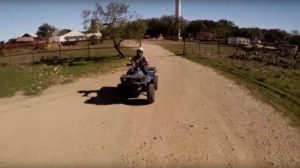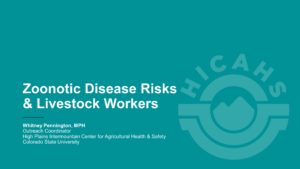CORONAVIRUS/COVID-19: Resources and information for agricultural businesses.
HICAHS Resources
Ag Education Classroom Materials
Lesson plans, handouts, and hands-on-activities on tractor and ATV /UTV safety for use in agricultural education classrooms. A corresponding online Safety Awareness Certificate exam is hosted by AET (The Agricultural Experience Tracker).
ATV Safety in Agriculture
Focus groups held by HICAHS and Montana State University Extension revealed four primary uses of ATVs on Montana ranches: animal handling, fence building and mending, weed control/spraying and general transportation. The resources listed below provide information on increasing safety while using ATVs for these activities:
ATV Safety Trifold Brochure
ATV Safety Poster – General Tips
ATV Safety Poster – Animal Handling
ATV Safety Poster – Spraying
ATV Safety Poster – Fencing
ATV Rider Safety Online Course ($25) The purpose of this training is to increase awareness of the risks and hazards associated with riding ATVs and to advocate for safer riding strategies to prevent injury and fatality.
Look under the Video Resources section for additional ATV safety information.
Community Animal Disaster Planning Toolkit
The Community Animal Disaster Planning Toolkit was developed by Colorado State University Extension in collaboration with HICAHS researchers. The toolkit includes step-by-step instructions for building a community response plan for pets in the case of an emergency. A series of webinars and a video accompany the kit.
Additional disaster preparedness resources from CSU Extension can be found here.
Heat Illness Prevention
Resources for training, legal compliance, and prevention are available on the dedicated heat-illness prevention page here (also available in Spanish here).
As of May 1, 2022, the state of Colorado requires all agricultural employers to comply with 7 CCR 1103-15, Agricultural Labor Conditions Rules and train their employees about heat illness prevention. Full compliance information is available from the Colorado Department of Labor and Employment (INFO #12C).
A summary of heat illness prevention regulations in the Western US (California, Colorado, Washington, etc.) is available here.
HICAHS Newsletters
Stay up to date on the latest HICAHS resources and publications by subscribing to our quarterly e-newsletter (archived here). Once subscribed you will get the next edition sent straight to your inbox.
Musculoskeletal Stress in Dairy Workers
Musculoskeletal injuries are common and preventable among dairy workers. In large-herd operations in the Western United States, over 3/4 of dairy workers reported these injuries over a year period. Injuries may be related to repetitive motion, high muscle force, and awkward posture. Fatigue, due to long shifts, unusual hours, and especially hot, cold, or wet conditions, places workers at a higher risk for injury.
The Upper Midwest Agricultural Safety and Health Center (UMASH), in collaboration with HICAHS, produced these recommendations to prevent repetitive motion injuries. The recommendations are based on the outcome of research done by HICAHS collaborators on the ergonomic impact of parlor design and instruments on dairy workers.
Respiratory Safety - Breathe Better with an N95 Respirator
Dusty environments on the farm or ranch can irritate your nose and lungs. This fact sheet has tips on how to use an N95 filtering facepiece respirator. The fact sheet is also available in Spanish.
Stress and Mental health
How do factors like pesticide exposure, diet, and sleep affect the risk of stress and suicide in farmers and ranchers? Watch this webinar featuring HICAHS Deputy Director Lorann Stallones to learn more.
Long hours, isolating work, unexpected weather, and fluctuating prices make agricultural work a stressful job. Don’t tough it out alone. If you’re feeling stressed, there are resources and people waiting to help.
If you or a loved one is experiencing a crisis, dial 9-8-8. The Lifeline provides 24/7, free and confidential support for people in distress, prevention and crisis resources for you or your loved ones, and best practices for professionals in the United States.
For crisis and resource services with ag-friendly counselors, contact one of the following:
- Colorado Crisis Services: 1-844-493-8255 or text TALK to 38255
- Rural and Farm Stress Hotline (Dakotas): 1-800-691-4336
- AgriStress Helpline for Wyoming: 1-833-897-2474 (call or text)
For free or low-cost mental health services from ag-friendly providers, find the information for your area:
- Colorado Agricultural Addiction and Mental Health Program – vouchers for 6 free sessions
- Montana Beyond the Weather – free counseling for the agricultural community
- Farm to Farm North Dakota – grant subsidized counseling
- Utah Ag Stress Assistance Program – vouchers for up to $2000 of mental/behavioral health services
- Wyoming Agricultural Community Voucher Program — reimbursement to providers for up to 6 sessions for individuals working in agriculture, rodeo, and/or farming communities. Licensed PROVIDERS please send invoices and a completed W9 to Sheila Ricley
- Invoices must include:
- Licensed mental health professional’s first and last name
- Cost per sessions
- Dates of services
- Client connection to eligible industry but NOT personal information for the client
- Invoices must include:
To find local behavioral health professionals, contact:
- Substance Abuse and Mental Health Services Administration’s (SAMHSA) National Helpline: 1-800-662-4357
- Therapist Locator
- NetworkTherapy.com – Therapist Directory
Depression is a serious, life-threatening condition that affects an estimated 19 million Americans. Knowing the signs and symptoms can help people know when to seek professional help.
- Depression Basics (National Institute of Mental Health)
- Depression Overview (Medline Plus, U.S. National Library of Medicine)
Suicide prevention and mental health crisis trainings for bystanders. These evidence-based trainings equip family, friends, and other community bystanders with the tools to help people experiencing mental health crisis.
Support your community and watch out for your neighbors. Check out these resources to help you know what to look for and how to help:
- Farm and Ranch Family Stress and Depression: A Checklist and Guide for Making Referrals (Colorado State University Extension)
- Signs and Symptoms of Stress (Upper Midwest Agricultural Safety and Health Center)
- Managing Farm Stress: Responding to Farmers in Need (Michigan State University)
- Montana Ag Producer Farm Stress Resource Clearinghouse (Montana State University)
- CSU Extension Resources for dealing with home, family, and finances (Colorado State University)
- Colorado Rural Mental Health Toolkit – graphics to promote Colorado Crisis Services
Universal Lift-Assist Lever for Foldable ROPS
Some farmers prefer to have the option to fold down the rollover protective structure (ROPS) on their tractor so that it won’t interfere with low-hanging branches in their orchards or other vertical clearance structures. Unfortunately, folding the ROPS often requires many steps. As a result, ROPS are left folded down and then do not provide the protection needed in an overturn. HICAHS researchers designed, built, and tested a universal lift-assist lever that allows operators to raise and lower a foldable ROPS from the operator seat.
Wildfire Smoke Information for Outdoor Workers
Wildfire smoke is harmful to human health and is especially burdensome to those with respiratory conditions like asthma. Unlike most occupations, workers in farming, forestry, and fishing have limited abilities to alter their work hours or move indoors to prevent exposure to smoke. Use the resources below to create a plan to protect you, your employees, and your family from smoke.
Remember: 80% of wildfires are human caused. Always observe local fire bans, including any bans when you travel.
VIDEO: What Agricultural Producers Need to Know About Wildfire Smoke.
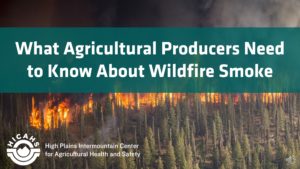
Frequently Asked Questions
When do I need to take action?
Air quality is reported to the public using the Air Quality Index (AQI). Take action when the air is considered unhealthy: when the AQI reaches 151. People with conditions like asthma or diabetes should take action sooner, when the AQI is between 101-150. There may be not an AQI monitor near you. If this is the case, take action when visibility is reduced to 5 miles.
What if I can’t go inside?
Limit outdoor activity as much as possible. Wear an N95 respirator to filter the air and reduce the number of smoke particles you breathe in. Surgical masks, bandanas, and other cloth face coverings do not provide sufficient protection as they do not filter the air you breathe in. While working, take more frequent breaks. Take breaks in enclosed buildings or structures (including vehicles) where the air is filtered and windows, doors, and all other openings are closed.
What should I do for my employees?
- Make N95s available for your employees to wear voluntarily. (Information on legal compliance below.)
- For those who are especially high risk (older, pregnant, have heart/lung conditions or diabetes), consider ways to alter their tasks so they can be indoors.
- Train your employees on how to monitor air quality and how to wear an N95. Use this training video. (Also available in Spanish here)
There’s a shortage of N95s. What should I do?
Contact your county emergency manager and local ag commissioner to see if they have personal protective equipment (PPE) stockpiled. You can utilize a full-facepiece or half-facepiece respirator with a particulate cartridge or pre-filter. If you do, you will need to update your respiratory protection program documents. See this video from OSHA about the voluntary use of respirators.
Is a wildfire smoke protection plan legally required?
All operations subject to OSHA regulations need to comply with voluntary respirator use provisions in the Respiratory Protection Standard. That includes providing each employee a copy of Appendix D. See pages 14-15 of this compliance guide for more information.
California is the only state with requirements for ag employers to protect their employees from wildfire smoke. The Western Center for Agricultural Health and Safety has resources to help California growers comply with this regulation.
Where can I get information on current fire activity and evacuation information?
There are several active fires across the region. Find the most up-to-date information on fire activity, evacuations, and community resources from local emergency management and InciWeb.
State Specific Resources
Colorado
– Tips to reduce exposure to smoke in Colorado in English and Spanish
– Colorado Smoke Outlook
Montana
– Tips to reduce exposure to smoke in Montana
– Montana Wildfire Smoke Update
North and South Dakota
– Tips to reduce exposure to smoke in North and South Dakota
– Wildfire Effects on North Dakota Air Quality
– South Dakota Real Time Air Quality Map
Utah
– Tips to reduce exposure to smoke in Utah
– Utah: Air Quality During Wildfires
Wyoming
– Tips to reduce exposure to smoke in Wyoming
– Wyoming Air Quality Monitoring Network
General Information
– Non-state specific tips in English and Spanish
– Find your local air quality using EPA’s Air Now tool.
– Disaster preparedness resources from Colorado State University Extension
Video Resources
Chainsaw Safety
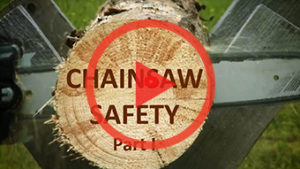 Learn how to operate a chainsaw to fell trees in this two-part chainsaw safety video series. Topics include choosing an appropriate saw, history of saws, safety features of saws, saw maintenance, how to run a saw, proper posture when using a saw, and avoiding hazardous situations.
Learn how to operate a chainsaw to fell trees in this two-part chainsaw safety video series. Topics include choosing an appropriate saw, history of saws, safety features of saws, saw maintenance, how to run a saw, proper posture when using a saw, and avoiding hazardous situations.
Dairy Safety Training: Considering Human and Animal Safety
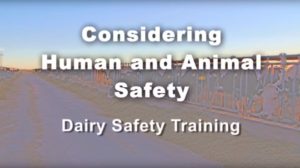 Today’s dairy workforce needs to know how to handle large animals, operate specialized equipment, and deal with extreme weather conditions without harming themselves or animals. This video series “Considering Human and Animal Safety,”outlines best practices on how to safely and productively care for dairy cows while reducing risk of injury to yourself.
Today’s dairy workforce needs to know how to handle large animals, operate specialized equipment, and deal with extreme weather conditions without harming themselves or animals. This video series “Considering Human and Animal Safety,”outlines best practices on how to safely and productively care for dairy cows while reducing risk of injury to yourself.
Videos are available in English, Spanish, and K’iche.
- Video 1: Introduction (1:14)
- Video 2: Outside Animal Care (8:59)
- Video 3: Milking Barn Safety (5:05)
- Video 4: Feeding and Other Safety Issues (4:20)
- Video 5: General & Outside Safety (17:54)
- Video 6: Milker & Calf Caretaker Safety (11:43)
- Video 7: Feeder Safety (7:01)
Safer ATV Riding on Farms and Ranches
A 6-video series focused on ATV use in agriculture.
- Video 1: Introduction to Safer Riding on ATVs in Agriculture (2:26)
- Video 2: Clothing and Protective Gear that You Need when Riding Your ATV in Agriculture (1:53)
- Video 3: Know how to Operate Your ATV Controls to Improve Your Safety (1:32)
- Video 4: Riding Strategies for Improving Your Safety on ATVs in Agriculture (4:29)
- Video 5: Riding Uphill, Downhill, Traversing, and Other Advanced Techniques on your ATV (5:31)
- Video 6: Review of Key Points for Safer ATV Riding in Agriculture (2:31)
Zoonotic Disease Prevention: Livestock and Dairy Operations
For livestock owners, operators, and managers: Review zoonotic diseases, specific livestock handling tasks that could lead to contact with pathogens, and evidence-based prevention and training methods to protect your employees and your heard [15:21]. Available in English.
Read the accompanying article published in Hoard’s Dairyman, “Some things shouldn’t be shared”.
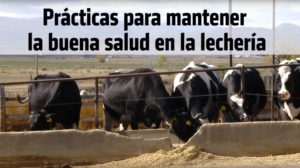 For dairy workers: Follow these best practices to keep you and your family safe from germs that could be spread to humans on dairy farms (11:54). This video is in Spanish, however an English language version is also available.
For dairy workers: Follow these best practices to keep you and your family safe from germs that could be spread to humans on dairy farms (11:54). This video is in Spanish, however an English language version is also available.
US Ag Safety & Health Centers YouTube Channel
Video trainings on additional topics (pesticides, respiratory protection, and more) are available on the U.S. Ag Health and Safety Centers’ joint YouTube page.
We understand that limited access to broadband internet may prohibit you from streaming video as part of your worker safety training. If you would like an offline version of the videos above, please contact us at [email protected] or 970-491-3064.
Can’t find what you’re looking for? Review our list of partner organizations to find additional worker health and safety resources.
